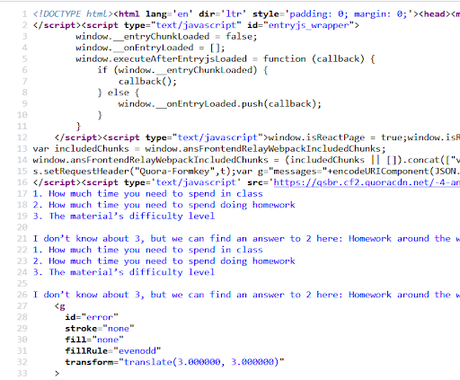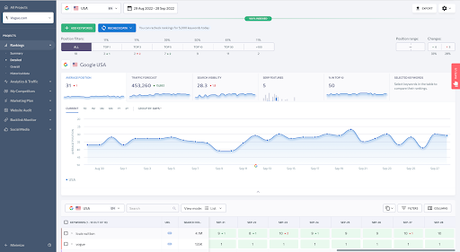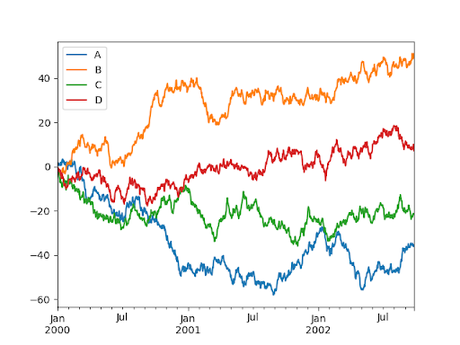We live in the age of the digital revolution, where information is like new oil. With such an extensive growth in data, we need tools to find and process information to succeed in any niche now more than ever. Marketing is no exception: a data-driven approach is the most effective way of doing business.
Speaking of effectiveness, process optimization is another way to improve marketing efforts. Luckily, there is an easy yet agile tool to code solutions for any of these problems - it's called Python. Let's learn how you can use Python for software solutions to your advantage.
Why Python is Great for Marketing
Python has become the most popular programming language, and not without reason.
There are three main reasons why you should choose Python over other languages to improve your marketing.
Compared to C#, C++ and Java, Python is much easier to learn. Also, programs written in Python generally take 3 to 5 times less time to develop than in the languages mentioned above.
This is mainly due to its human-friendly function names (e.g., "find", "append", etc.), which make it much simpler for newbies to learn.

Not only beginners but experienced users can benefit from it. You don't need to remember a ton of syntax to make things happen, you simply write what needs to be done, and it works!
There is a price for intuitive syntax: compared to C#/C++ and Java, Python programs tend to work slightly slower. This has little to no effect since you don't need an overly optimized solution for your marketing scripts, as most of them don't require many hardware resources.
Therefore, compared to other languages with a similar learning curve (e.g., JavaScript, PHP), Python has fewer restrictions on what you can accomplish, plus you'll have better performance. Python use cases for back-end and front-end development are endless - see how versatile this language is.
No need to reinvent the wheel - there are a ton of Python libraries for any purpose. The downside is that you cannot guarantee that the functions in all libraries are perfectly optimized. But, as we mentioned above, you don't need speed from Python programs for marketing purposes.
Also, since these libraries are created by Python developers, they will grow as more people using Python create even more libraries.
Read more: Why choose Python for Website Development
5 Uses of Python in Marketing
1. Workflow automation
Firstly, make sure you are working effectively. If routine tasks take up 80% of your time, you will be unable to enjoy the benefits of using Python.
Python loves APIs! The most popular task managers like Notion, Asana, ClickUp, Jira, etc., provide APIs to communicate with other applications.
It also applies to other marketing software, e.g., CRMs and spreadsheets - the only limit is your fantasy. For example, you can set up the following scenario: when you publish a new YouTube video, the Python script will post an announcement to all your social media accounts, plus change the status of the task in Notion (or a similar application). Here is an example of a similar process.
You can try no-code automation from Zapier, but sometimes they are not enough - this is when Python shines.
2. Web Scraping
Parsing is one of the most popular uses of Python because it makes it extremely simple to crawl any website. Whether you need to get ranking positions from Google's SERP, store recent Twitter posts, or find a relevant thread on Reddit, Python does it all.
But nothing can beat Python in terms of crawling JavaScript sites. Since many popular platforms use JavaScript to display content, scraping the page without rendering it is impossible. Here is what the Quora source code looks like:

If you take a closer look, the page's content is within the "script" tag, so to access it properly, you need to render the JS. To do so, you can install the "Selenium" library or even run a Chromium window that the Python script will control.But be careful and try not to go too deep with custom scripts. As we mentioned earlier, there are plenty of tools with APIs that you can use to your advantage. For example, SE Ranking offers a keyword position monitor with an in-built traffic forecast and SERP features, and Mention.io can crawl socials for you - it could be a good idea to take data from 3rd party sources.

3. Text Analysis
A text written by a human can be hard for computers to understand, especially if it has some emotional tonality, slang, mistakes, etc. But sometimes, it is vital to process large amounts of texts. A popular example is a segmentation of messages from support chats. With Python, you can tag inbox messages to sort out requests by departments or analyze historical data to determine where your users are struggling the most.
Plenty of natural language processing (NLP) libraries for Python ( NLTK, for example) have built-in grammar, stopwords, tonality detection, and more.
4. Machine Learning
The amount of data is growing exponentially, becoming harder and harder to process by a human brain.
Machine learning is the answer. A strong sign confirming this is Google Analytics Insights - it uses machine learning to analyze user behavior to make conclusions and predictions.
Machine Learning is hard to develop, but Python makes it much easier. Not only because of syntax but also ML-friendly libraries.
Machine learning capabilities are endless, so it's a smart investment to start learning ML and artificial intelligence with Python today.
5. Business Intelligence
Data analysis is a cornerstone of the data-driven approach we went over in the introduction. It combines all the techniques we described earlier into simple charts and graphics.In this step, you need to work with databases a lot so that you can make calculations to form simple conclusions. Pandas is a well-known data analytic framework for Python. It not only conveniently manipulates datasets but also provides visualization tools.
 https://pandas.pydata.org/docs/user_guide/visualization.html
https://pandas.pydata.org/docs/user_guide/visualization.html Remember that you can import data to the BI system you use (e.g., Microsoft BI, Google Data Studio) using APIs if you need a more agile reporting toolset.
Read more: Top 11 Python Frameworks for Machine Learning and Deep Learning
Best Courses to Learn Python
You may be familiar with W3Schools for learning HTML and CSS. The Python course shares the same structure: you have a brief theory and a practical task. The learning process is simple and straightforward: read, learn, and code to complete each lesson.
The sweet part is that it's free and includes tutorials on popular modules like NumPy, Pandas, SciPy, and Django. Not only that, but it also teaches you advanced topics like how to use Python with SQL databases and Machine Learning. It's the best course out there, for sure!
- Udemy Python Bootcamp From Zero to Hero
This course works best to learn the general principles of Python. It teaches you what object-oriented programming is and how to use it, reinforcing your knowledge with practical tasks.
- Web Scraping in Python from DataCamp
You will be crawling at some point. This course will teach you exactly that! Before taking it, you need to be confident with HTML and XPath/CSSpath and with HTTP requests and JS.
The course is relatively short (4 hours) and fairly easy, so it's worth taking it before writing scraper scripts to avoid beginner's mistakes.
- Machine Learning With Python from Simplilearn
This is a 10-hour YouTube video that dives deep into machine learning using Python. It's recommended to watch it when you get used to Python. The course includes a lot of theories of ML and examples of implementing it using Python.
There are many more courses, including library-specific ones, so you'll surely find one that fits your needs if it's not listed here. Also, the community support is amazing: there is a 99% probability that any problem faced by a software development company can be solved on StackExchange.
Wrapping Up
Humans cannot keep up with a large amount of data that needs processing. Nowadays, online marketing has a lot of information to collect and process. Thus, marketers need software to help them to solve their problems.
Those who want to create apps are looking for an easy-to-learn language with vast capabilities. Hiring a Python development company is the answer: not only does it have intuitive syntax and huge community support, but its applications are practically endless. From back-end and front-end to web scraping and machine learning - Python can handle it all. There is not a single reason why you shouldn't use Python for marketing, so start doing it now!

